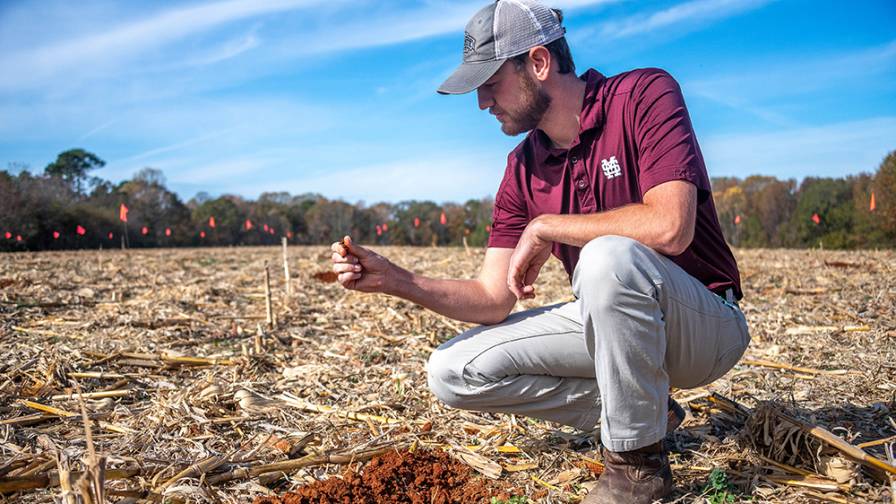Why Identifying Sulfur Deficiency in Wheat Is Difficult
Sulfur (S) deficiency in wheat has become more common in Kansas, particularly in no-till wheat, writes Stacy Campbell at Hays Post. The reasons for this is a reduction in sulfur being emitted to the atmosphere and cooler soil temperatures because of no-till, which slows S mineralization in the soil. Some crops in the rotation, such as soybean, can take up significant amounts of S.
In wheat plants S-deficiency is yellow and stunted and is observed in patches in the field, especially in areas where there has been previous soil erosion or soil movement. The patchy S-deficient areas of the field are often found on hilltops or side slopes where erosion has occurred and soil organic matter is reduced, or where leaching is more pronounced. Wheat in areas where topsoil was removed or significant cuts were made (i.e. terraced or leveled fields).
Sulfur deficiency in growing crops is often mistaken for nitrogen (N) deficiency. However, unlike N deficiency, older leaves show firing and yellowing, with S deficiency, the pale yellow symptoms appear first on the younger/uppermost leaves. Plants with S deficiency eventually become uniformly chlorotic (yellow leaves).
Sulfur deficiencies have been showing up early in the spring, shortly after green-up, before organic S is mineralized from soil organic matter, and before wheat roots can grow into the subsoil to utilize any available S (sulfate) accumulations. Deficiencies of S are often difficult to identify because the chlorosis is not always obvious. Crops lacking S also may be stunted, thin-stemmed, and spindly. In the case of wheat, maturity is delayed. Winter annual weed competition is also enhanced due to the slower growth and lack of tillering.
Continue reading at Hays Post.





